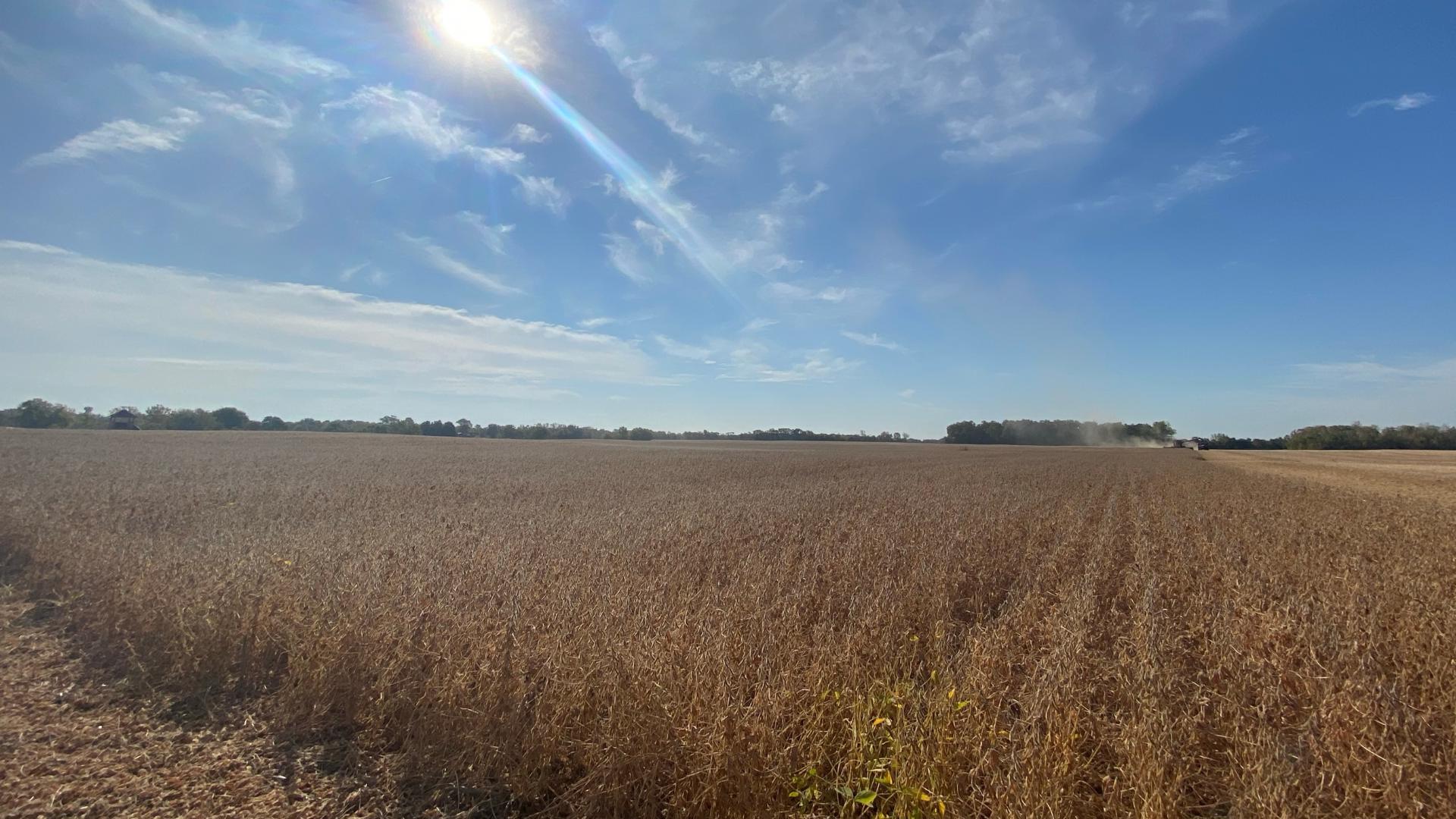HANCOCK COUNTY, Ind — It's no secret central Indiana is in a dry spell.
In fact, we're on track to tally one of the driest Septembers on record.
"It is a little on the crispy side right now," said Hancock County native Jon Sparks, who now farms on about 2,000 acres.
"I started helping my dad when I was eight," said Sparks. "I didn't start running the combine until I was at least 12 I think."
In his more than 30-year career, Sparks says he doesn't remember dusty and dry conditions quite like this.
"There's an upside to everything," said Sparks. "The good news is we're getting a lot done."
Taking advantage of the dry time is one thing. Some of Sparks' soybeans, however, aren't taking in much moisture. He says he's seen levels far below the ideal 13%.
"We had one or two loads that were below seven percent," said Sparks, "and I don't know that I have ever seen that."
Less moisture content means Sparks is turning in less volume. Less volume means less money for Sparks.
"That extra is what adds to your bottom line at the end of the day," said Sparks, "and helps you go home and pay for your kids' stuff at school or whatever it is. That's the money we live off of at the end of the year."
Sparks' other concern is the fire risk of the dry crops. He says if Hoosiers disobey the ongoing burn bans, it could be detrimental to nearby crops.
"It's like the best kindling you've ever seen in the world right now," said Sparks.
Sparks says he and his family started harvesting about a week earlier than normal. The bulk of the season is expected around the first week of October, when Hoosiers will see more heavy machinery on the roads.
"This combine is probably double the size of the first one I ran when I was 12," said Sparks, "and the roads are the same."
Sparks, who also serves as the Indiana Farm Bureau District 6 director, says drivers should be observant when driving this fall.
Slow-moving vehicles traveling less than 25 miles per hour will be marked with an orange triangle sign.
Pass farmers with caution. Equipment can have parts projecting outward that can be difficult to spot.
Don't assume a tractor that pulls to the right side of the road is letting you pass. It may be turning left.
If a tractor is approaching and there is no room to pass, bring your vehicle to a stop and pull over as far as possible.
As for the crops, Sparks says it's too early to tell how this dry spell will affect the soil and crops in 2025.
"History tells me if it's this dry now, it won't be this dry all the way through to the spring," said Sparks.

